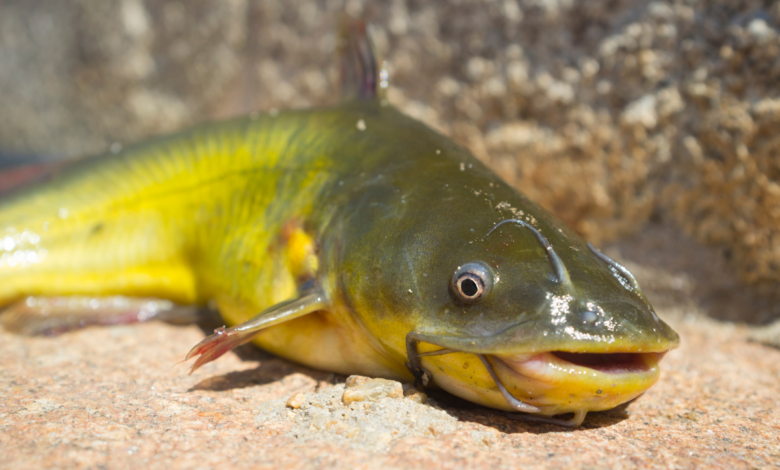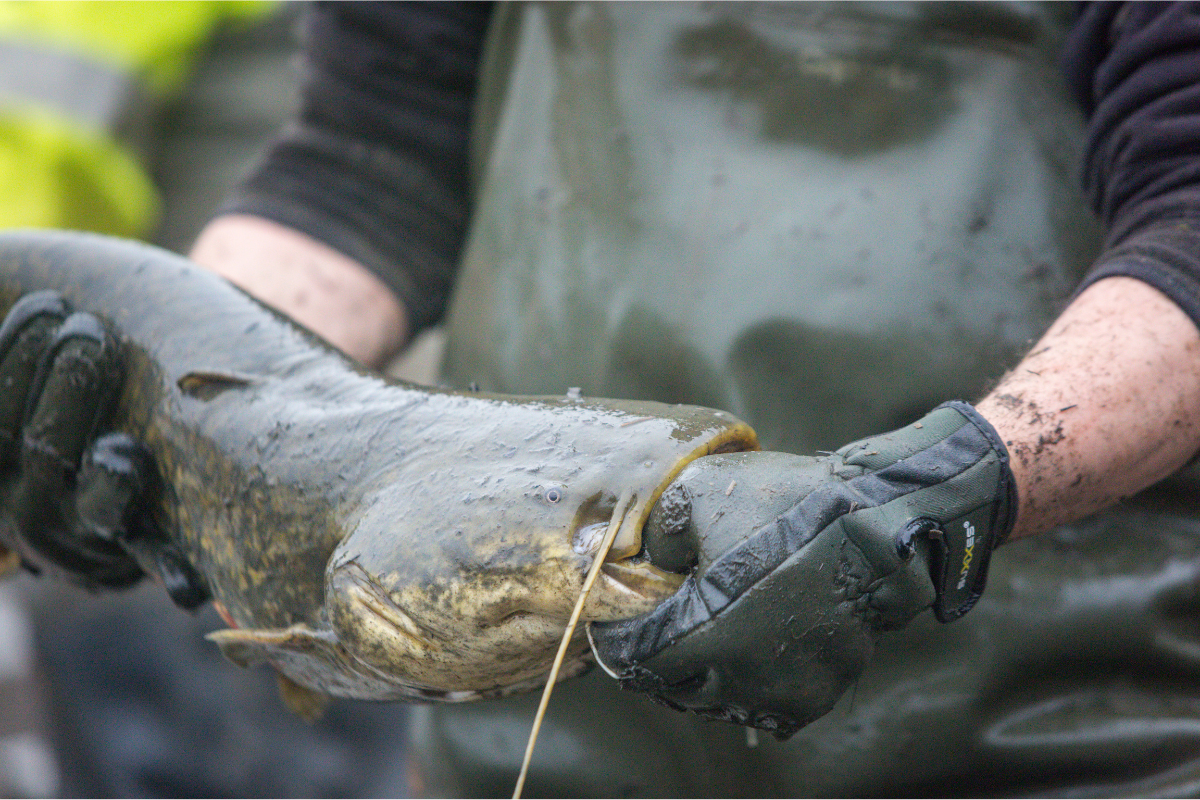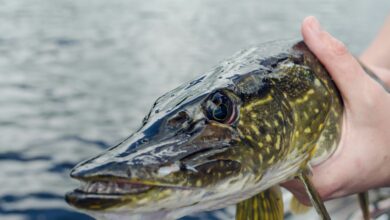The Complete Guide to Catching and Cooking Bullhead Catfish

A quick question: Name one freshwater fish that is easy to identify.
The easy answer is the catfish. And if you can identify catfish, you will have no problems with identifying the bullhead catfish either.
While most anglers find catfishing to be exciting, the humble bullhead is often ignored by young anglers. You may hear things like, “ But those mudcats, they taste just like mud!”
Ask any veteran angler and you will know that they taste delicious no matter the way you cook them. And let me say this straight. Fishing bullhead catfish can be a rewarding experience.
If you have already been introduced to the fun of fishing bullheads, great! Time to take a closer look at bullhead fishing and cooking techniques.
Understanding Bullhead Catfish
The bullhead catfish family, classified under the genus Ameiurus, has seven distinct species. Just like the three types of catfish species found in the US, three varieties of bullhead are commonly found. These are yellow, black, and brown bullheads.
Do not make their names misguide you into using coloration as the only identification feature. Depending on the water conditions their colors can vary.
A distinct feature of bullheads is their rounded tail. They have no scales, and their bodies are covered with sensory cells. Plus, they have six trailing barbs or “feelers” emerging from around the tip of the mouth. Their length can vary between 7 to 12 inches.
These three freshwater fishes are widespread across the country. You will find them from the Mississippi drainage to the water bodies of the central US.
Brown and yellow bullheads are found in the eastern US and you will find the yellows as far as the western belts of Texas. The black bullhead thrives in the Great Lakes and St Lawrence River.
Bullheads prefer quiet lakes and backwaters with moderate to heavy vegetation. These tough devils can tolerate poor water conditions, pollution, low oxygen content, and high temperatures. Besides, unlike other freshwater fish, bullheads are primarily nocturnal feeders.
Best Gear for Catching Bullhead
Regardless of the species, you do not need fancy gear for catching bullheads. Their smaller size allows you to use light tackle. My preference is a medium-action rod with a spin-cast reel. A 6 to 10-pound-test monofilament line should do the trick. Heavier lines can make feeling the bites from these lightweight fish difficult.
Using a heavy sinker for a bullhead is not a good idea. A small split shot and a light sinker are the best option as bullheads will not bite or spit out the bait – a super annoying habit – if it offers high resistance.
Since bullheads often swallow the hook, use a large-shanked one. For hook size, the numbers between 4 and 1/0 are the best options. Also, bullheads tend to gulp down the bait quickly. I had to snip the line a few times and retrieve the hook later. So, using a jig is a good way to prevent deep hooking.

Make sure that the hook needle is sharp as their bony jaws can make it difficult for the hook-end to sink in. Keep the tip of the hook exposed to help it dig in.
Before moving to baits, let me add that bullheads do not have that sharp sense of smell like channel cats. But it is sharper than other scaled fish. However, they have an excellent taste of smell, thanks to the taste receptors on their body.
For this reason, stinky cut baits, live and dead minnows, liver, leeches, shrimp, worms, nightcrawlers, and dough balls are some of the best bait for bullhead catfish. Small and medium-sized crayfish also work as bullhead baits. The trick is to crush the smaller crayfish and let the juices spread in water.
In short, bullheads are not picky when it comes to bait. I have seen them biting marshmallows, cheese, hotdogs, bagels, and other oily options.
While I prefer natural baits for bullheads, artificial baits like worms combined with some extra-sticky dip, work well too. Crankbaits and jerkbaits, especially salt-impregnated ones with erratic action, are some other options.
Where to Find Bullhead Catfish
As the waters warm up in spring, it is a good time to catch bullheads. They are most active when the water temperature is between 55 and 70 degrees. In early spring, they can be caught in the daytime as they seek warmer waters.
They tend to feed heavily during the cooler evening hours as temperatures rise. Then the best times for bullhead fishing are during the night hours. But that does not mean that they will not bite during the day.
The spawning season for bullheads is between May and early June. They spawn in shallow water, seeking the protection of rocks and stumps, and can be caught easily.
Fall is another great time for fishing as bullheads tend to feed aggressively to prepare for the winter. They can be caught in shallow points close to deep waters. As the water temperatures drop in winter they get less aggressive. They go into some state of hibernation during winter which allows them to survive the cold.
Just like catfish, bullheads prefer deep holes adjacent to shallower areas in rivers and near eddies. I have also found them in deep holes near dams and under bridges. Also, sandbanks near a river bend can have deep holes which the bullheads love.
Anglers often use the term “Foam is home” for catfish, and it works for bullheads as well. Areas in a creek or stream where foam has built up can be the right spots.
They are also found in ponds and small lakes with a soft bed rich in organic matter. Check near weed edges or transition zones where the depth changes abruptly or gradually.
Generally, the black bullhead has fewer preferences and is found in all water types. In comparison, the brown and yellow bullheads prefer moderate water clarity with more weeds and bottom vegetation.
How to Catch Bullhead
A big advantage of bullhead fishing is that you can keep things simple and still enjoy the act. The basic gear you need is the sinker, the hook, and the line.
Unlike cast and retrieve fishing, you do not need to move the bait constantly and the bullheads still bite. Fishing can be done at the surface or mid-level, and you can even target the bottom by using a small sinker. Make sure to keep the line tight as it helps in detecting strikes.
Since bullheads tend to prefer deeper waters during the day, bottom fishing is another effective way. Remember, if you are fishing in the current, you will need a heavier sinker. The technique is to lower the rig to a spot instead of making a cast. Never be in a rush while button fishing. Do it softly without disturbing the water and be patient.
Preparing Bullhead Catfish for Cooking
Handling bullheads can be challenging for two reasons. Not only are they slimy, but there are barbed spines along their pectoral fins that can pierce the skin. When I started, I received a few pricks from these sharp spines and it hurt.
Keep in mind that fileting this fish can result in a lot of meat getting wasted. Here is a quick guide for cleaning and skinning bullheads.
- To remove the hook hold the fish belly down between the first two fingers, with the thumb placed on the mouth. Make sure to place the fingers underneath the pectoral fins. Use a nose flier or forceps to remove the hook. You can wear gloves for protection.
- With a sharp knife, cut down through the fish starting from a point directly behind the dorsal spine, The angle of the cut should be towards the head. Cut as deep as possible without severing the backbone.
- Bend the fish backward to break the backbone and expose the entrails. Now, split the skin along the back with the knife. Start from the edge of the first cut and extend it to the tail.
- Grasp the lower body with the other hand and pull in opposite directions. That way, the edible flesh, and the backbone will get separated from the head, entrails, and skin.
If the fish is small in size, you can keep it whole. It is best to clean the fish with water and refrigerate it at the earliest.
If you have caught it from muddy or unclean waters, soak it overnight in a solution of cold water, two tablespoons of vinegar, and one tablespoon of salt. Rinse under running water before cooking.
Cooking Bullhead Catfish
Here is a common question: Are bullhead catfish good to eat?
Absolutely! While a lot of people are afraid to eat fish from the bottom, I think they have a mild flavor and are easy to cook. Here are the best ways of cooking bullheads.
Frying
Mix a bowl of flour with salt, black pepper, and celery seed. Once the fish is dry, dredge both sides with the flour mix. Add some oil to a heavy bottom pan and when the oil is smoking hot place the fish in it. Fry both sides till they turn golden brown in medium heat. For garnishing, use fresh parsley and lemon wedges.
Grilling
Grilling works best if you have cut the fish into thin filets. Spread olive oil, lemon juice, pepper, and salt on the filets and let them marinate for 20-30 minutes. Then, preheat the grill for 5-10 minutes. Place the fish on the grill and allow it to cook for 8-10 minutes. Make sure that the flesh has turned white and flakes easily.
Baking
Baking is one of the easiest ways of cooking bullheads. Drizzle the fish with olive oil, salt, and pepper and place it on a baking sheet. Set the oven to 350°F and bake for 20 minutes. The flesh should become tender, but should not start flaking.
Smoking
For smoking, you need to prep the fish filets in a mixture of salt, brown sugar, pepper, and 1½ cups of water. Refrigerate the fish in the mixture for 6 hours. Prepare the grill and once the smoke develops, transfer the fish to a grill basket. Keep the basket lightly oiled. For small bullhead filets, 15 to 20 minutes of smoking should be good enough.
Final Thoughts
Quite simply, bullhead catfish are fun to catch and there’s plenty of them around. They also strike hard at a wide range of baits fearlessly, and put up a good fight. And even though these grumpy-faced species are called mudcats, they taste as good as any other catfish.
Bullheads are the perfect way to start if you want to learn how to catch catfish. If you plan a fishing trip with the family, these fish are great options for introducing the kids to angling.
Admittedly, a bullhead is not that trophy fish that you will talk about in your old age. But at times, you want to relax, take in some fresh air, and get back to the basics. This is where catching bullheads stands apart with its charm.


